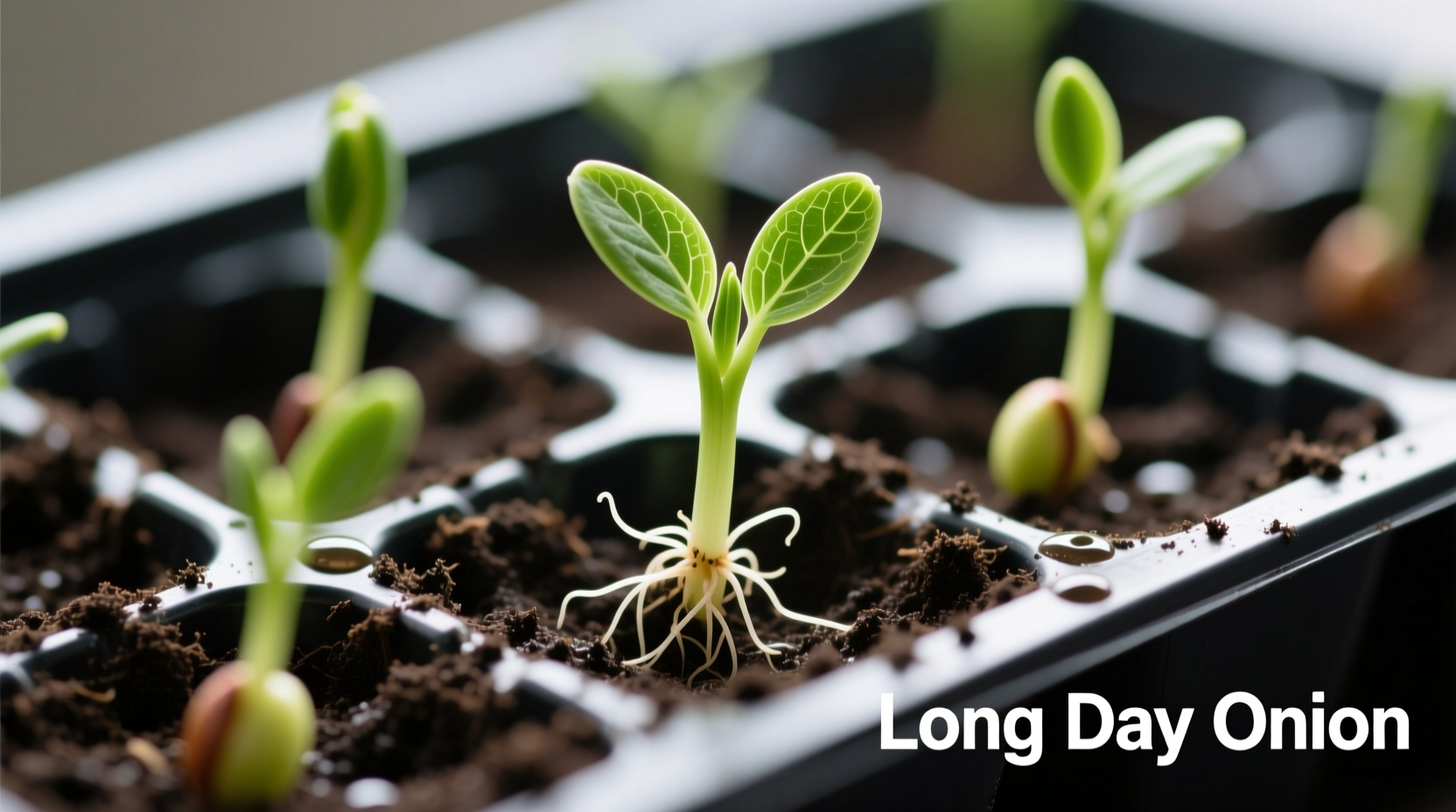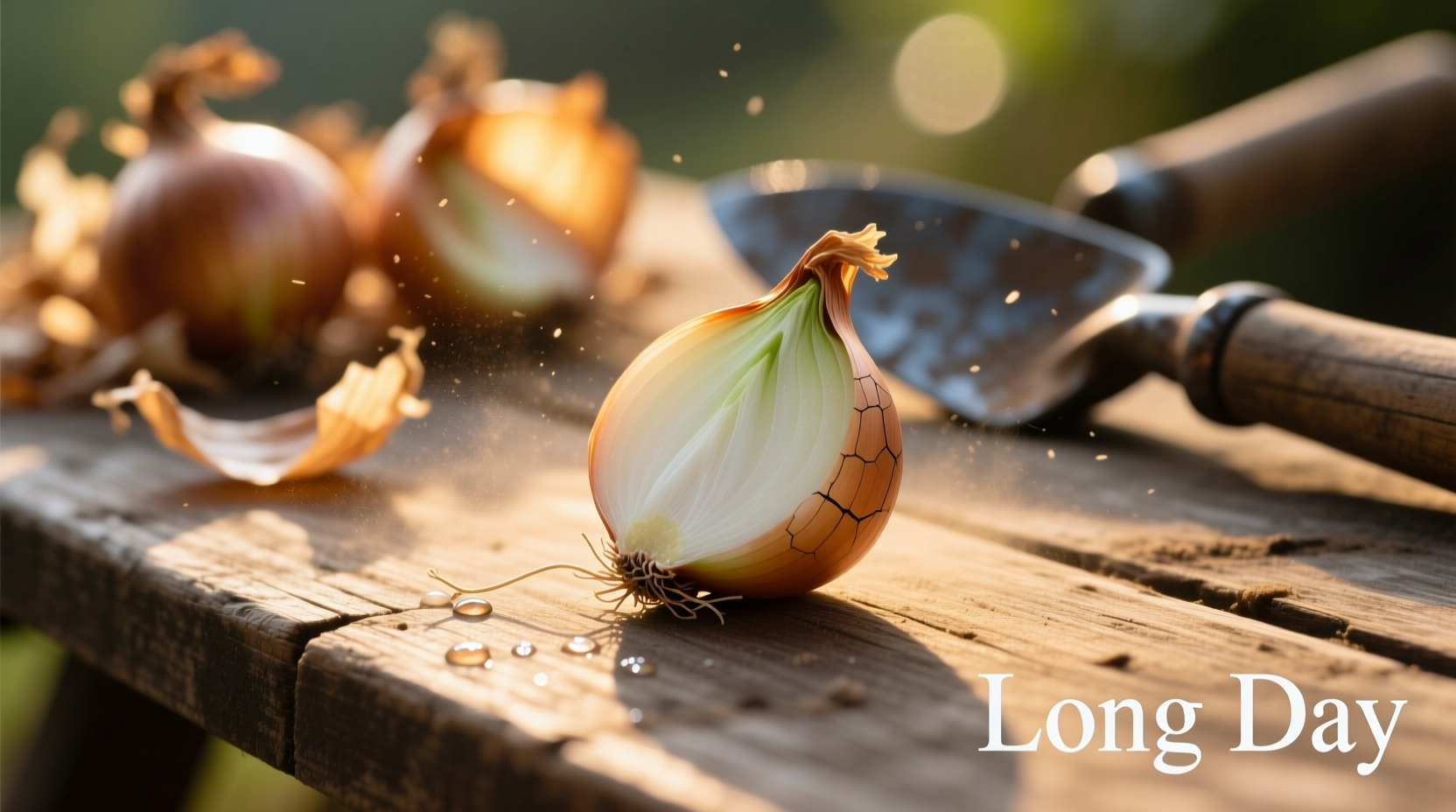Understanding which onion variety to grow can make the difference between a bountiful harvest and complete disappointment. Long day onion seeds represent one of the three primary categories of onions (along with short day and day-neutral varieties), each responding differently to the amount of daylight they receive. This comprehensive guide provides everything you need to successfully grow long day onions in your garden.
What Makes Long Day Onion Seeds Different
Unlike short day onions that begin forming bulbs with just 10-12 hours of daylight, long day varieties require 14-16 hours of sunlight before they start developing their characteristic bulbs. This biological mechanism evolved to ensure onions mature at the optimal time in northern climates where summer days are significantly longer.

Geographic Suitability for Long Day Onions
Long day onion seeds perform best in regions north of 36° latitude. According to the USDA Agricultural Research Service, these varieties thrive in zones 3-6 where summer days provide sufficient daylight hours for proper bulb formation. Attempting to grow long day onions in southern regions often results in poor bulb development as the required daylight threshold isn't reached before temperatures become too hot.
| Onion Type | Daylight Requirement | Best Growing Regions | Common Varieties |
|---|---|---|---|
| Long Day | 14-16 hours | Northern US, Canada | Yellow Sweet Spanish, Walla Walla, Red Zeppelin |
| Short Day | 10-12 hours | Southern US | Granex, Texas Super Sweet, Vidalia |
| Day-Neutral | 12-14 hours | Middle US regions | Stuttgarter, Candy, Redwing |
When to Plant Long Day Onion Seeds
Timing your planting correctly is crucial for successful long day onion cultivation. The University of California Agriculture and Natural Resources recommends starting seeds indoors 8-10 weeks before your last expected frost date. For direct seeding in the garden, wait until soil temperatures reach at least 50°F (10°C).
Consider this growing timeline for long day onions:
- Early March: Start seeds indoors (northern regions)
- Late March to Early April: Prepare garden beds with well-draining soil
- Mid to Late April: Transplant seedlings or direct sow seeds
- June: Onions begin bulb formation as daylight increases
- July to August: Harvest mature bulbs
Soil Preparation and Planting Techniques
Long day onions require well-drained, loose soil with plenty of organic matter. Cornell University Cooperative Extension research shows onions perform best in soil with a pH between 6.0 and 6.8. Before planting, amend your garden bed with 2-3 inches of compost worked into the top 6-8 inches of soil.
When planting long day onion seeds:
- Plant seeds 1/4 inch deep in rows spaced 12-18 inches apart
- Thin seedlings to 4-6 inches apart once they reach 4 inches tall
- Water consistently to maintain even soil moisture
- Avoid planting in areas where onions or related crops grew the previous year
Essential Care for Healthy Bulb Development
Proper care throughout the growing season ensures your long day onion seeds develop into large, flavorful bulbs. Unlike short day varieties that mature quickly, long day onions require consistent attention during their extended growing period.
Key care practices include:
- Watering: Provide 1 inch of water weekly, increasing during dry spells
- Fertilizing: Apply balanced fertilizer when plants are 6 inches tall, then every 3-4 weeks
- Weeding: Remove weeds carefully to avoid damaging shallow roots
- Pest management: Watch for thrips and onion maggots, common issues with long day varieties
Harvesting and Curing Your Long Day Onions
Knowing when to harvest long day onions is critical for maximum storage life. The USDA notes that long day varieties typically mature 100-120 days after planting, depending on the specific cultivar. Watch for the tops to naturally fall over and yellow, indicating maturity.
Follow these steps for proper harvesting:
- Stop watering when tops begin to yellow
- Wait until at least half the tops have fallen over
- Carefully lift bulbs from soil using a garden fork
- Cure onions in a dry, well-ventilated area for 2-3 weeks
- Trim roots and tops after curing is complete
Troubleshooting Common Long Day Onion Problems
Even with proper care, gardeners sometimes encounter issues with long day onion seeds. Understanding these problems helps you address them quickly:
- Premature bolting: Caused by temperature fluctuations; choose bolt-resistant varieties
- Small bulbs: Often due to overcrowding or insufficient daylight for the variety
- Disease issues: Rotate crops annually to prevent fungal diseases
- Poor storage: Ensure proper curing and store in cool, dry conditions
Remember that long day onion seeds won't form proper bulbs if planted too far south. If you're gardening in southern regions but prefer long day varieties for their flavor profile, consider starting seeds later in the season when days are longer.
Maximizing Your Long Day Onion Harvest
Long day onions typically offer superior storage capabilities compared to their short day counterparts. Varieties like Yellow Sweet Spanish can store for 6-8 months when properly cured and kept in ideal conditions. For best results, store your harvested onions in mesh bags or wooden crates in a cool (32-40°F), dry (65-70% humidity) location with good air circulation.
Whether you're a beginner gardener or an experienced grower, selecting the right onion variety for your location makes all the difference. Long day onion seeds provide excellent results in northern climates when planted and cared for properly, yielding large, flavorful bulbs perfect for cooking and long-term storage.
How do I know if long day onion seeds are right for my location?
Long day onion seeds work best in regions north of 36° latitude, including most of the northern United States and Canada. If you're gardening north of Virginia, long day varieties are your best choice. Southern gardeners should opt for short day or day-neutral varieties instead.
When should I plant long day onion seeds in my garden?
Start long day onion seeds indoors 8-10 weeks before your last expected frost date, then transplant outdoors in early spring. For direct seeding, wait until soil temperatures reach at least 50°F (10°C). In northern regions, this typically means planting between late March and mid-April.
Why aren't my long day onions forming proper bulbs?
This usually happens for one of three reasons: you're growing long day varieties too far south where they don't receive enough daylight, the plants are overcrowded, or you planted at the wrong time. Long day onions require 14-16 hours of daylight to initiate bulb formation, which southern regions don't provide early enough in the season.
How long do long day onions typically store after harvest?
Properly cured long day onions can store for 6-8 months under ideal conditions. Varieties like Yellow Sweet Spanish and Walla Walla have excellent storage capabilities when kept in a cool (32-40°F), dry (65-70% humidity) location with good air circulation.











 浙公网安备
33010002000092号
浙公网安备
33010002000092号 浙B2-20120091-4
浙B2-20120091-4